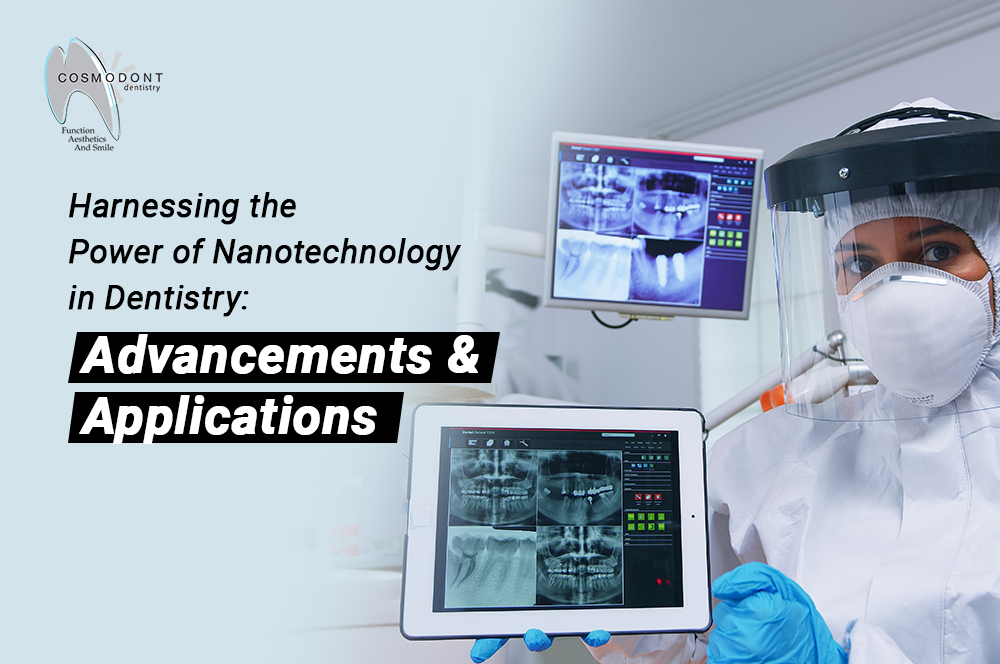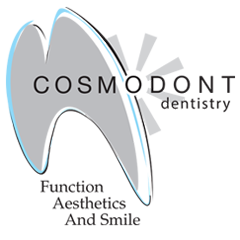Harnessing the Power of Nanotechnology in Dentistry: Advancements and Applications

Nanotechnology, the manipulation of matter at the nanoscale, has emerged as a game-changing field
with transformative potential across various industries, including healthcare. In dentistry,
nanotechnology is revolutionizing the way oral health conditions are diagnosed, treated, and managed.
By leveraging the unique properties of nanomaterials, researchers and dental professionals are
developing innovative solutions to address a wide range of dental challenges. Let's delve into the
advancements and applications of nanotechnology in dentistry:
- Nanomaterials for Restorative Dentistry:
Nanotechnology has paved the way for the development of advanced dental materials with enhanced properties for restorative procedures. Nanocomposites, composed of nano-sized fillers such as silica nanoparticles and nanoclays embedded in a resin matrix, exhibit superior mechanical strength, wear resistance, and aesthetic properties compared to traditional dental materials.
These nanocomposites enable dentists to create durable and aesthetically pleasing restorations, such as fillings, crowns, and veneers, that closely mimic the natural appearance and function of teeth. Additionally, nanomaterials can release bioactive agents, such as fluoride or calcium ions, to promote remineralization and strengthen tooth structure, offering long-term benefits for patients' oral health.
- Nanostructured Biomaterials for Tissue Engineering:
Nanotechnology holds tremendous potential in tissue engineering and regenerative dentistry by
facilitating the development of nanostructured biomaterials that promote the regeneration of dental tissues. Scaffold materials engineered at the nanoscale provide an ideal environment for cell attachment, proliferation, and differentiation, facilitating the regeneration of dental pulp, periodontal ligaments, and bone tissues.
Nanofibrous scaffolds, electrospun from biocompatible polymers such as collagen or hydroxyapatite, mimic the natural extracellular matrix of dental tissues and support the growth of regenerative cells. These nanostructured biomaterials can be combined with growth factors, stem cells, or bioactive
molecules to accelerate tissue regeneration and repair damaged or diseased dental tissues effectively.
- Nanoparticle-Based Drug Delivery Systems:
Nanotechnology enables precise control over drug delivery systems for targeted and controlled release
of therapeutic agents in the oral cavity. Nanoparticles, such as liposomes, polymeric nanoparticles, and
dendrimers, can encapsulate drugs, antimicrobial agents, or bioactive molecules and deliver them to
specific sites within the oral cavity with enhanced efficiency and efficacy.
In dentistry, nanoparticle-based drug delivery systems hold promise for the treatment of various oral conditions, including dental caries, periodontal diseases, and oral infections. By delivering therapeutic agents directly to the affected tissues while minimizing systemic side effects, these nanocarriers improve treatment outcomes and reduce the risk of antimicrobial resistance.
- Nanostructured Surfaces for Dental Implants:
Surface modifications at the nanoscale have been shown to significantly enhance the osseointegration and long-term stability of dental implants. Nanostructured implant surfaces, engineered to mimic the
topography of natural bone, promote faster bone healing and implant integration, leading to improved implant success rates and reduced healing times.
Nanotextured surfaces created through techniques such as plasma spraying, acid etching, or
electrochemical deposition increase surface roughness and surface energy, facilitating better cell adhesion and bone formation. By optimizing the biological response at the implant-bone interface, nanostructured surfaces enhance the biomechanical stability and longevity of dental implants,
ultimately improving patient outcomes.
- Nanodiagnostic Tools for Early Disease Detection:
Nanotechnology offers innovative solutions for early disease detection and diagnosis in dentistry through the development of sensitive and specific nanodiagnostic tools. Nanomaterial-based biosensors, such as quantum dots, carbon nanotubes, and gold nanoparticles, can detect biomarkers associated with dental diseases, including caries, periodontitis, and oral cancers, with high accuracy and
sensitivity.
These nanodiagnostic tools enable early detection of oral health conditions at the molecular level, allowing for timely intervention and personalized treatment strategies. By facilitating early diagnosis and
monitoring of disease progression, nanotechnology-based biosensors contribute to improved patient outcomes and better overall oral health.
- Conclusion:
In conclusion, nanotechnology represents a transformative force in dentistry, offering innovative solutions to address diverse oral health challenges. From advanced restorative materials and tissue engineering scaffolds to targeted drug delivery systems and diagnostic tools, nanotechnology is reshaping the future of oral healthcare. As research in this field continues to advance, the integration of nanotechnology into clinical practice holds tremendous promise for enhancing treatment outcomes, improving patient experiences, and ultimately advancing the field of dentistry. To know more visit us today!
